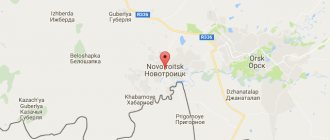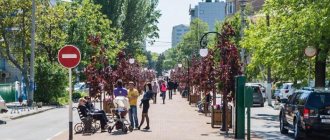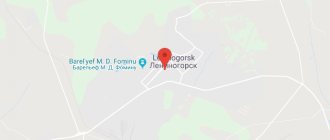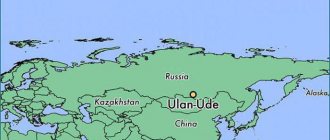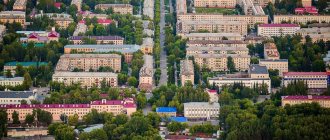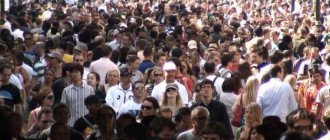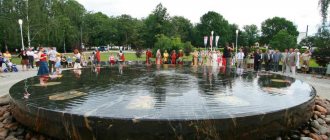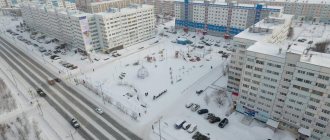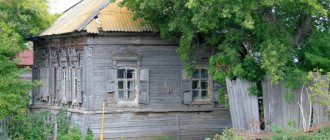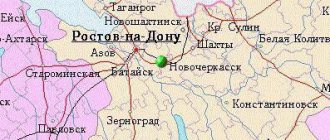Geographical position
Novocherkassk is located on a small hill between the Aksai rivers and its tributary Tuzlov. The city is located 1000 km from the capital of the country, and only 30 km separates it from the main city of the region, Rostov-on-Don. Also within 30-40 kilometers of accessibility there are a number of large cities in the region - Shakhty, Novoshakhtinsk, Aksai, Bataysk. The population of Novocherkassk notes convenient transport accessibility to many amenities and benefits of large cities. The total area of the settlement is 100 square meters. km. The soils on which Novocherkassk is located are characterized by a large amount of shell rock, shale, and sandstone. The abundance of groundwater leads to the appearance of large voids under urban structures.
Sights of Novocherkassk at night
Novocherkassk: city attractions
Many sights of Novocherkassk and its surroundings were beautifully photographed at night. For example, here are photos of DonGAU in Persianovka HD quality
Photo of educational building No. 2 of DonGAU in the light of night lights
(full-size photo in HD quality with a resolution of
2370 by 3550 pixels
can be opened in a new window)
Photo of the tower with the dome of educational building No. 2 of DonGAU in the light of night lights
(full-size photo in HD quality with a resolution of
2420 by 3630 pixels
can be opened in a new window)
Triumphal arches, the cathedral and other sights of Novocherkassk at night are collected in a separate gallery.
General view of the triumphal arch in Novocherkassk from the side of the Herzen descent (photo in HD quality with a resolution of 2900 by 1900 pixels
can be opened in a new window for detailed viewing)
By the way, new photographs of the city of Novocherkassk are being prepared for publication.
Settlement history
Novocherkassk, whose population we are considering, has a unique history. It was immediately planned and built as a capital city. In 1805, for a number of economic, political and environmental reasons, it was decided to move the capital of the Don Cossacks from Cherkassk to a new location. The former capital was flooded every year, so first of all they looked for a new location where such disasters were impossible. The Emperor of the Russian Empire favorably accepted the request to move the capital and sent the famous city planner General Devolan to carry out the decision.
Novocherkassk was planned in the best traditions of European culture. Wide avenues, boulevards with green spaces, and spacious squares were laid out here. Despite the attractiveness of the new capital, the local population was in no hurry to move, and construction proceeded slowly. Therefore, in the first decades the city developed primarily as a location for military units. Many administrative and public buildings and government housing were erected here, but there was almost no private development. Only with the advent of industrial enterprises did the influx of residents gradually begin to the city, but this process was very slow. During the years of revolutionary events in the country, a center of white resistance was formed in Novocherkassk, which led to a significant increase in population.
In 1920, the city was finally taken by the Bolsheviks. During Soviet times, the settlement developed as a large regional, industrial and scientific center. Then the Cossack past of the city was carefully hushed up, and only in 1993 Novocherkassk was declared the capital of the World Cossacks.
Alexander Nevsky Church
Encyclopedia of Novocherkassk - Novocherkassk.net
On the map Photos
The church, designed by the architect Lavopierre, was built wooden, and therefore temporary, so its construction took little time. On June 29, 1810, Archpriest Alexey Oridovsky consecrated the newly built church. There was only one throne in the Alexander Nevsky Church, in honor of the holy noble prince Alexander Nevsky. In 1822, one of the residents of Novocherkassk, “who loves the splendor of the house of the Lord,” added a chapel to the church in the name of St. Great Martyr Paraskeva Pyatnitsa, consecrated on October 26 of the same year by Archpriest Jacob Merkhalev. December 22, 1896 The last liturgy was celebrated in the old wooden Alexander Nevsky Church, during which priest Vasily Petrov made a heartfelt speech about love for his temple, which for 86 years was the center of the spiritual life of many people. In 1898, the low, gloomy, cold and dark old church was dismantled and transported to the Mishkin village of the Novocherkassk village, where a new church was built from this material, consecrated on November 12, 1900. The new Alexander Nevsky Church, built behind the Alexander Garden (now the city park), was built, like the Ascension Cathedral, in the New Byzantine style, one-story, with a semicircle in the altar, behind which there is a room for the sacristy. The temple can accommodate up to 1,500 people for one service. The main dome inside is decorated with a picturesque image of the God of Hosts, and the semi-domes and walls of the temple are decorated with images of events from sacred history and the faces of saints, as well as sacred sayings. An iron staircase leads to the bell tower. The outside of the church was whitewashed, and plaster was placed only around the windows and doors. The inside of the temple was completely plastered, painted with oil paint and decorated with paintings.
Climate and ecology
Novocherkassk is located in a temperate continental climate zone, with mild, short winters and long, hot summers. The average annual temperature is about 9 degrees Celsius. Winter in the city begins in December and ends at the end of February. In January, the coldest month of the year, the thermometer can drop to minus 20-25 degrees, but on average it stays around -8. Summer in Novocherkassk begins in May and lasts until the end of September. In August, the thermometer can rise to 40 degrees Celsius, but the average summer temperature is +23. At the same time, in summer the population of Novocherkassk, Rostov region, experiences a rather acute lack of moisture, especially in August. It receives approximately 60 mm of precipitation throughout the year, with the wettest months being January, February and June.
While the climatic conditions of Novocherkassk are generally favorable for living, the environmental situation leaves much to be desired. The city is experiencing big problems due to water pollution in the rivers, and hence there is a shortage of drinking water. The region's industry significantly pollutes the city's soil and air. The Novocherkassk administration is working to solve these problems, but has not yet achieved much success in this direction.
Family is positive
As RT found out, the affected family raised four children, including adopted ones.
Also on topic
“Contact and communication with journalists is prohibited”: The Moscow City Court transferred disinfector Anton Kotov to house arrest
The Moscow City Court released from pre-trial detention center under house arrest the person involved in the criminal case about “poisoned watermelons” in the capital’s Magnit. 39 year old...
The Ministry of Health of the Rostov Region also clarified that one child was sent to the regional children's hospital, the rest of the victims were left in the intensive care unit of the Novocherkassk hospital, located not far from the village where the family lives.
The head of the Bessergenevsky rural settlement, Anatoly Gudkov, confirmed to RT the very fact of the tragedy in the village, but refused to comment on the possible causes of what happened until the results of the investigation became available. He also noted that the family is positive, no complaints have been received against them.
“Very good family. There are both adopted children and our own. The whole family is very positive,” the head of the settlement told RT.
After it became known about mass poisoning in the Rostov region, information appeared in the media that the cause of the tragedy could have been low-quality homemade meat seized from the home of the affected family. Nevertheless, toxicologist at the Rostov-on-Don City Emergency Hospital, Hugas Porksheyan, in an interview with RT, expressed doubts about this version: according to him, the poisoning is unlikely to have occurred due to food.
“The clinical picture there is similar to that of carbon monoxide poisoning. Adult relatives regained consciousness when they were taken from the house to the hospital. The children were in serious and extremely serious condition - apparently, there was a fairly long exposure. But it is still impossible to speak with certainty about the exact causes of the poisoning,” the specialist concluded.
Administrative division and population distribution
The small size of Novocherkassk is the reason that there is no official division into administrative units. But the population of Novocherkassk independently identified separate parts that have official and unofficial names. So, there are the districts of Center, Oktyabrsky, Molodezhny, Vostochny, Sotsgorodok, Cheryomushki, as well as small parts called Kosmos, Galinka, Khotunka, Novoselovka. Some time ago, the city was absorbed by the Tatarsky farm, which retained its name. The average population density of the city is 1329 people per 1 sq. km. But the city center is the most populated, and the Molodezhny, Sotsgorodok, and Oktyabrsky districts are the least favorable, and residents try to leave here.
Population dynamics
They began to count the population of Novocherkassk from its very foundation. In 1811, 6.7 thousand people lived here. In the first decades of the settlement's existence, the population growth was slow; noticeable growth began in the second half of the 19th century. So, in 1863, 18 thousand people lived here, and by the end of the century there were already 50 thousand. Before the revolution, there were about 70 thousand people in the city, and after it it decreased to 42. In Soviet times, the population dynamics was positive. By 1989, 188 thousand people lived in the city. But perestroika led to the beginning of a long period of decline in the number of residents. In some years the dynamics were positive, but the overall trend was negative. Today there are 170 thousand people in the city, and the forecasts are still disappointing.
Platovsky Prospekt
Platovsky Prospekt is the central thoroughfare of Novocherkassk. It is named after Ataman Matvey Platov, the founder of the city. Historically, the avenue starts from the Ascension Cathedral, from which a wide strip stretches for three and a half kilometers. There are many ancient buildings and attractions of the city along the avenue; we will dwell on some of them. It is worth noting that all significant historical and architectural monuments are marked with signs for the convenience of tourists. We are greeted by a small sculpture of Matvey Platov on a horse, behind which stretches an avenue, although it would be more correct to call it a boulevard.
Platovsky Prospekt
The long white building overlooking the square and the avenue is the House of Officers. Once upon a time, magnificent balls were held here, and lines of carriages came from all over Novocherkassk. The main entrance faced the avenue, but it is now blocked. The theological seminary with a brick facade was built in 1883 according to the design of A.A. Yashchenko. The green and blue two-story building at number 64 is Platov’s house. It was built at the beginning of the 19th century. In Novocherkassk, the Platov family owned three plots of land, but the construction of houses progressed very slowly, and they lived on a country estate in Mishkino. The last owner of the house was the granddaughter of the great ataman Marfa Ivanovna Platova. In 1861, she sold the house to the artist Login Khristianovich Fricke, who lived here until his death in 1893.
Platov's House
The yellow building with columns, made in the style of classicism, is a former military guardhouse (Platovsky Ave., 68). It was erected in 1856. In past times, at night, the guardhouse was illuminated by a bright light, and the changing of the guard took place with particular pomp, accompanied by a military band.
Guardhouse
Nearby is the Museum of the History of the Don Cossacks, which is definitely worth a visit for a detailed acquaintance with its rich collection. A little further are the Komissarzhevskaya Theater and the city house of culture. The theater often hosts performances on a Cossack theme, and the city cultural center hosts Cossack ceremonies - weddings, initiations, and others. On the other side of the avenue, in a high-rise building from the Soviet era, the city government is located, and a little further there is a monument to Matvey Ivanovich Platov, which we will talk about later. Proceeding further, on the left side we will see the Azov market, named after the Azov seat of the Cossacks in 1641. Among the shopping arcades is the Archangel Michael Church, built in 1870.
Azov market and church
Further on you can see the triumphal arch.
Transport
Novocherkassk is one of the first cities in the Rostov region where a tram appeared. There is a unique transport triangle here: the tram turns around and goes back, like a car, along one side of this figure.
There are also buses and minibuses in the city. Travel costs from 10 to 14 rubles, tram costs 8 rubles. Transport connects all areas of the city, traffic is good, without major congestion.
This is interesting: 1211, Novy Urengoy: a brief history of the city
Economy of the city
During Soviet times, Novocherkassk, whose population is closely connected with its economy, became a major industrial center. In 1936, an electric locomotive plant was built here, which today is an important enterprise for the economy of the region, employing almost 10 thousand people. In the 50s, a synthetic products plant was launched in the city. At its best, up to 3 thousand people worked here. Today the plant is almost stopped, only one workshop is functioning. At the same time, the electrode plant began operation, which today is one of the largest metallurgical enterprises in the region.
The stability and profitability of the city's economy is also ensured by an enterprise for the production of petrochemical equipment, several large food and construction companies, two clothing factories, and enterprises in the social and cultural spheres. There are two universities and about a dozen secondary specialized educational institutions in Novocherkassk. The volume of production per capita in the city is 67 thousand rubles.
Novocherkassk
Symbolism
| Flag | Coat of arms |
Administration
346430, Rostov region, Novocherkassk, Platovsky Ave., 59-b.
Phones: +7 (86352) 5-99-11, 5-99-13, fax +7 (86352) 5-99-17
Housing and communal services hotline
Official site
www.novochgrad.ru
Head of the city administration
Lysenko Yuri Evgenievich
Geography
Novocherkassk is one of the large southern Russian cities. It stands out for its history and special appearance: layout, architecture, unique monuments.
Novocherkassk is a city of regional subordination of the Rostov region. It borders with the Oktyabrsky and Aksai rural districts of the Rostov region. The total area of urban land is 12,784.32 hectares. The population is 168.8 thousand people.
Story
The city of Novocherkassk was founded on May 18 (30th according to the new style) 1805 by military ataman Matvey Ivanovich Platov according to the design of military engineer Lieutenant General Franz Devolan. The new capital of the Cossacks, the city of New Cherkassk, was built according to the most modern examples of European architecture of that time and at the same time according to the canons of Cossack culture.
Developing as the administrative capital of the Don Cossacks, Novocherkassk naturally had a predominant population of Cossack origin. But nonresidents also lived there, including people of many nationalities.
During the years of the revolution, it became the only city in Russia where the Provisional Government fled. It was in Novocherkassk that two white armies were formed - the Volunteer and the Don. Novocherkassk from 1917 to January 1920 was the “all-Russian center of counter-revolution.”
With the establishment of Soviet power on January 7, 1920, the city moved from the category of the Cossack capital to a regional, and later city center.
In the second half of the twentieth century, the city became a major industrial, scientific and cultural center of the Don region.
Economy
The basis of the economy of the city of Novocherkassk is industrial production. Its share in the citywide production volume is more than 90%.
Dozens of large and medium-sized industrial enterprises carry out their financial and economic activities in the city.
The city's industrial production is represented by two groups:
- manufacturing industries;
- production and distribution of electricity, gas and water.
Three enterprises of the city - the branch of OJSC OGK-2 Novocherkassk State District Power Plant, LLC PK Novocherkassk Electric Locomotive Building - are the largest.
The branch of JSC OGK-2 Novocherkasskaya GRES is one of the largest power plants in the south of Russia.
PC Novocherkassk Electric Locomotive Plant LLC, part of Transmashholding CJSC, is one of the leading enterprises in the city and the largest in Russia in the production of mainline passenger and freight electric locomotives.
OJSC "EPM - Novocherkassk Electrode Plant" is the largest enterprise in Russia producing graphite electrodes of various sections (from 75 to 710 mm in diameter), used for smelting ferrous and non-ferrous metals.
The group of enterprises producing electrical equipment includes TMH-Electrotech LLC, which produces electric motors, electric generators and transformers.
The main activity of OJSC Aviation Technological Equipment Plant 31 is the repair of non-standard technological equipment for aircraft.
Sladoff LLC operates in the food industry.
Education
The city is proud of its higher educational institutions, which have a centuries-old history.
South Russian State Polytechnic University is one of the leading technical universities in Russia. Novocherkassk State Reclamation Academy, which continues the traditions of the founder of the country’s first scientific school of reclamation, Academician Shumakov, is the country’s basic university in this industry.
In addition to universities, 7 colleges in the city train specialists for all fields of activity. There are 45 kindergartens, 22 educational institutions implementing general education programs.
Culture
Novocherkassk today has significant cultural potential with developed infrastructure. There are 14 municipal cultural institutions in the city.
Far beyond Novocherkassk, the Donskoy Drama and Comedy Theater is famous. V.F. Komissarzhevskaya (Cossack Drama Theater) is one of the oldest theaters in Russia, the first Don Theater.
There are 6 municipal institutions of additional education for children in the field of culture and art in the city. There are 4 municipal cultural and leisure institutions and 2 municipal concert organizations.
The city has a centralized library system, consisting of 9 libraries, on the basis of which library and information centers have been created. In Novocherkassk there is one of the oldest libraries in the region - the Central City Library named after. A.S. Pushkin.
The world's only Museum of the History of the Don Cossacks with departments: House-Museum of the artist I.I. Krylov, House-Museum of the battle painter M.B. Grekova, Ataman Palace.
The Novocherkassk school of painting has long traditions. The city has a city Artists' Club, creative associations "Women's Palette" and "Mishkinskie Bugry".
Social sphere
Novocherkassk is home to 167.2 thousand people of 33 nationalities and nationalities, of which about 11 thousand people are war and labor veterans, 53.5 thousand people are young people aged 16 to 35 years.
The city healthcare system includes 18 treatment and preventive institutions: 12 municipally owned institutions and 6 regional institutions: an anti-tuberculosis clinical dispensary, a psychoneurological dispensary, a dermatovenerological dispensary, an oncology dispensary, a drug treatment dispensary and a specialized children's home.
In order to improve the quality and accessibility of government and municipal services, 7 territorially separate structural divisions of MAU MFC were opened in the city's microdistricts.
Sport
There are 3 sports schools in the city, 2 of which are Olympic reserve schools, in which over 3,200 people play sports. Successfully carries out its activities to strengthen the health of the population and develop summer and winter sports of the MAU State Center "Ermak", which includes the "Ice Palace", the "Ermak" stadium and the "Gazprom for Children" sports and recreation complex with a swimming pool, games room, wrestling room and gyms.
Since 2011, the MAU FOC swimming pool “Dolphin” has been operating in the city.
On the basis of MAU GSC "Ermak" there is a testing center for the VFSK "GTO".
The city has a large number of open sports grounds, which are in municipal, departmental and private ownership, which fully meet the need of the city population for physical education and sports.
Novocherkassk is the historical and current capital of the Don Cossacks
Novocherkassk managed to preserve its historical appearance. Historian V.D. Sukhorukov wrote about the capital of the Don Cossacks: “Straight wide streets and large squares make up the beauty of Novocherkassk.” Novocherkassk is a monument city. Over the past almost two centuries, it has combined a distinctive history, traditionally high culture and scientific and technical potential. With the revival of the Cossacks in the 1990s, Novocherkassk regained its status as the main city of the Cossacks and became the capital of the Great Don Army, as well as the Cossacks of Russia and Abroad.
The pride of the city is the huge triumphal arches (cultural heritage sites of federal significance), erected in honor of the participation of the Don Cossacks in the Patriotic War of 1812.
Two identical arches were built according to the design of the capital’s architect A.I. Ruska in 1817 during the life of the founder of the city, the famous Don Ataman, hero of the Patriotic War of 1812, Count Matvey Ivanovich Platov.
Among the major monuments of the city, one can note the monuments to the founder of the city, military ataman, Count M.I. Platov (1853), a monument to the legendary Cossack Ermak (1904), the hero of the Caucasian wars, General Baklanov (1911).
The city is home to more than 250 cultural heritage sites of federal, regional and local significance.
During the years of democratic reforms, the process of revival of the Don Cossacks began. Novocherkassk was recognized not only as historical, but also as the current capital of the Don Cossacks and the Cossacks of all Russia. Foreign Cossack diasporas recognize Novocherkassk as the world capital of the Cossacks.
Sights of the city of Novocherkassk
Employment
A large number of stable economic enterprises provide employment for a large number of residents. The Employment Center (Novocherkassk), which collects vacancies from all enterprises in the city, records one of the lowest unemployment rates in the region - only 0.5%. The main vacancies are associated with a shortage of blue-collar workers. But people with higher education, especially young professionals, do not always manage to find a suitable job. Women under 40 with higher education experience the greatest difficulties in finding a job.
Chronicle of city outskirts
So much has been said about the old center of Novocherkassk that there is no point in saying anything further
Most likely, many people already know all the most important and good things. However, I assume that there are definitely no chronicles about Novocherkassk on its urban outskirts
And I’ll show you everything here.
If you drive somewhere away from the historical center of the city, take off the rose-colored glasses from your eyes, and remove the polarizing filters from your lenses, you will see only gray industrial landscapes.
Photo from the hills of the Yanovo-Grushevsky farm to the industrial areas of Novocherkassk
Factory chimneys in Novocherkassk stand in an uneven formation from Oktyabrsky to Molodezhny and Sotsgorod
Imagine how romantic it must be to climb a high hill next to the huge cemetery in Yanovka, so that in the rays of the setting sun, together with your girlfriend, you can look down on these dear expanses of Novocherkassk.
Well, isn't it scary? Or, on the contrary, scary? You haven’t seen the Workers’ Town and the Dugouts next to the factory dump in the autumn and spring.
And the factory dump next to NEVZ (the one in Zemlyanka), in my opinion, is another big and gray landmark of modern Novocherkassk.
View from the factory dump in Novocherkassk to communist slogans, other garbage and a NEVZ pipe
All local historians trample around the historical center in Novocherkassk, advocating for the greatness of the capital of the Don Cossacks. But modern Novocherkassk after the revolution did not acquire anything special that the capital can be proud of. For example, there are enough factories in Chelyabinsk.
I am sure that the chronicler’s view simply must be comprehensive and objective. Let's look at the city from the other side.
Here is a view of the outskirts of Novocherkassk towards the prison. On the left, one of the main symbols of modern Novocherkassk is again clearly visible.
View of the outskirts of Novocherkassk towards the prison
Well, here it’s already prohibited to photograph everything except garbage.
Photo of the surroundings of the prison in Novocherkassk in the area of Ukrainskaya Street
Demographics
The Employment Center (Novocherkassk), which conducts sociological research on the city's demographic indicators, notes that the birth rate is gradually increasing, and the mortality rate is decreasing. But still the indicators are still disappointing. There is also a problem of migration outflow of the population from the city, which leads to negative dynamics in the number of city residents. On average, the number of city residents is reduced by 2 thousand people annually. Statistics show that the life expectancy of city residents is gradually increasing, but men are showing a less confident increase in the number of years lived. The ratio of city residents by gender in Novocherkassk generally corresponds to all-Russian trends; there is one woman for every man.
Capital of the Don Cossacks
The city of Novocherkassk is the historical center of the Don Cossacks. Cossack is originally a Turkic word that translates as “free mercenary.” Although Dahl's dictionary defines the word “to show” as meaning to communicate, to reveal. Based on the latter, it is clear that the purpose of the Cossacks is border service with the aim of reporting on the state of affairs abroad and representing the first line of military forces of the state.
There are several monuments to famous Cossack chieftains in Novocherkassk. The monument to Ermak rises in the city center on a block of stone, its height is 4 meters. The monument was erected in 1904 as a tribute to the Don Cossacks’ ataman, who conquered Siberia. At the same time, construction was carried out at the expense of voluntary donations, the collection of which took 27 years. Here you can tell your child about the conquest of Siberia, explain that this is not just “some guy on a pedestal,” but one of the people who made Russia a great power.
Being the capital of the Don Cossacks, Novocherkassk did not limit itself to just one monument to the Cossack atamans. In 2003, on Cathedral Square, next to the monument to Ermak, a monument to the founder of the city, Ataman Platov, was erected. And back in 1911, a monument to Ataman Baklanov was erected. Previously, it was located in a cemetery in St. Petersburg, but at the beginning of the 20th century, the remains of the ataman and the monument were transported to the center of Novocherkassk. In 1995, it was restored and re-opened. It is noteworthy that previously there was a monument to Lenin on this square. However, in the new era, Novocherkassk pays tribute to the Don atamans and the history of the region’s native Cossacks.
In addition to the monuments themselves, the city has a number of squares and streets named after famous atamans: Baklanovsky, Platovsky Avenues, and Ermaka Avenue is one of the central streets of Novocherkassk. By the way, during the Soviet years in the city center, most of the streets had different names, for example, Ermak Avenue was called Comintern Street. Now the streets take on a different sound. In the center of Ermak Avenue there is a square of the same name, and at the beginning and end there are Trinity Square and Pavlov Square. In 2005, a monument to Reconciliation and Concord was erected on Ermak Square in memory of the events of the Civil War (1918-1921).
The Ataman Palace is another landmark of Novocherkassk, symbolizing the importance of the Don Cossacks in Russia. Today the palace is a favorite place among tourists and townspeople, and previously it was the residence of the atamans of the Don Cossacks, as well as a stopping place for the imperial family during their stay in Novocherkassk. During the Soviet years and in the 1990s, the building housed the city administration. However, in 2001, it finally passed into the use of the Museum of the History of the Don Cossacks. On the territory of the Cossack Museum there are various exhibitions from the history of the Cossacks, including extensive collections of weapons, military uniforms, Cossack household items, and various ancient documents. All this can make a lasting impression on a child’s imagination.
But the children receive special attention from the restored rooms of the Ataman’s palace: the front room, the living room, the dining room and the Ataman’s office (in the future, the arrangement of the House Church is expected)
City infrastructure and quality of life
Small cities in Russia generally cannot compete with large, developed settlements, and Novocherkassk is not a happy exception. The city's population experiences a shortage of large cultural, healthcare, and trade facilities. But this problem is being successfully solved by nearby cities. But difficulties with buying housing and finding employment for young people lead to the fact that school and university graduates often leave the city. The infrastructure is poorly modernized, there are problems with roads. All this, of course, reduces the quality of life of people and their loyalty to the place.
Triumphal arches
Another architectural monument, which, along with the Ataman Palace, is the “calling card” of Novocherkassk are two triumphal arches, built in 1817 at two entrances to the city: on the northern and western sides. Now, naturally, they are already deep inside the city, and not at its “gates”.
In 1817, a visit of Tsar Alexander I to Novocherkassk was planned. Ataman Platov ordered the construction of two majestic triumphal arches (since it was unknown which road the sovereign would take to enter the city). The city's impressive front gates were hastily built in three months. However, Alexander I did not come to Novocherkassk during Platov’s lifetime. Instead, in the fall of 1817, the ataman met the Tsar’s brother, Grand Duke Mikhail Pavlovich, at the newly built Triumphal Gate.
The triumphal arch and the loyal inscription on it.
Subsequently, the arches still greeted all Russian monarchs and members of their families without exception. They saw revolutionary upheavals and civil war, the construction of the Industrial District in the steppe, the invasion of Hitler's troops and the liberation of the city. Pushed by history deep into the city's neighborhoods, the arches in Soviet times, until 1982, did not know any repairs or restoration, and were in a very neglected state. All bronze trim was removed from them and sent to be melted down.
In the 80s, the northern city gate was restored to its original appearance as a result of restoration. And in the 2000s, a major overhaul of both triumphal arches was carried out. Decorative elements, bas-reliefs and even an inscription - a quatrain of greetings to Alexander I - were restored using old photographs. Lighting was installed to beautifully illuminate the arches at night.
Second Arc de Triomphe
Location: the northern arch is located on the street. Herzen and separates the central part of the city from new microdistricts; western - on Podtyolkov Avenue, near the Azov market and meat processing plant.

